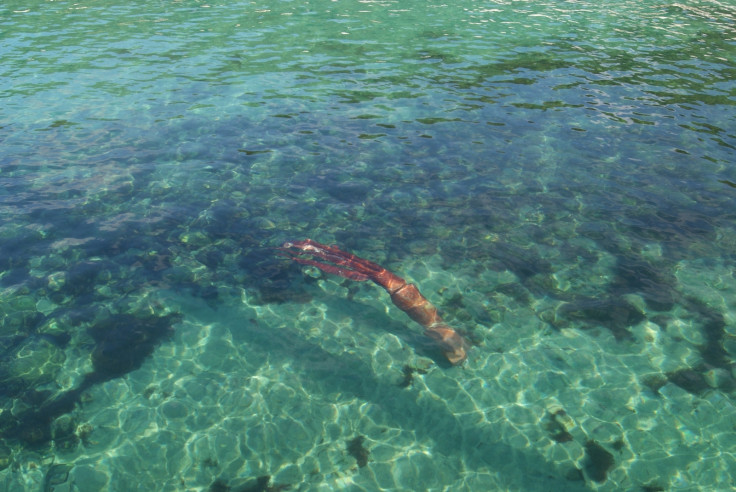Giant squid murdered by fellow squid on Spanish coast
It's extremely rare to spot a live giant squid, and the first time one was sighted outside of Japan

On 7 October 2016, a rare incident happened off the Spanish coast: a live giant squid was sighted as it washed ashore.
It was the first recorded instance of a giant squid being found outside of Japanese water, where the secretive species usually roams.
Giant squid certainly live up to their name. On average, they measure about 13m and weigh about half a tonne. That's equivalent to the size of a school bus. The biggest specimen ever recorded was about 18m and weighed a tonne.
But even though they are one of the world's biggest invertebrates, they are elusive creatures that live in deep waters. It's very rare to spot one alive, and sightings are events in themselves.
The giant squid found in Spain was initially spotted 3m underwater by Bares Port, in Galicia. It was still alive, and remained so until it washed ashore and died a few hours later.
Upon analysis, a research team led by Professor Angel Guerra found that the squid was an "immature female" – effectively a 'teenage squid' – that weighed about 105kg (230 pounds).
Et tu, Brute?

Mystery still surrounds the reasons why this particular squid ended up 10,642 km away from Japan and the circumstances of its death.
A necropsy of the squid showed weird marks on its body that are not consistent with a beaching (when animals die on shore). The team found that rather than a predator, the female squid was attacked by none other than a bigger giant squid.
The researchers suggest the smaller squid faced off with a bigger peer, probably fighting over food.
It is possible the squids ventured into Spanish waters looking for a particular fish: the blue whiting.
Blue whitings are local to the northeastern Atlantic Ocean, and can largely be found between Morocco and Iceland.
They form huge shoals between 150 and 3,000 meters underwater (on average they can be found about 300 and 400 meters down), making them a perfect prey for giant squids and trawlers.
Because the blue whiting shoals are so big, they attract many giant squid at the same time, and they don't like to share.The research suggests that this encourages kleptoparasitism in squids: bigger ones will attack small individuals in order to get their food. The research team thinks that the smaller squid might have been hunting for some blue whiting when it was attacked by the larger specimen. It is most likely that the bigger squid robbed the smaller one of its food.
The smaller specimen, disoriented because of its wounds, swam to warmer waters it couldn't adapt to.
"The blood (hemocianian) of the giant squid exponentially decrease its oxygen carrying capacity when it goes from 6-8 °C to 15-16 °," Guerra told IBTimes UK. " As a consequence, if the animal passes from a cold mass of water to a temperate mass of water, he/she suffocates."
Professor Guerra and his colleagues' findings are published in the Journal Ecology.






